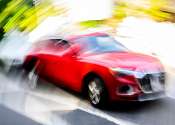Ping-pong balls as sound absorbers for low-frequency noise
Long-term exposure to low-frequency noise can cause numerous health problems, but the solution may be found in an unexpected object, a ping-pong ball. Conventionally thought of as the hollow plastic balls that speed through ...
Oct 10, 2023
1
80









